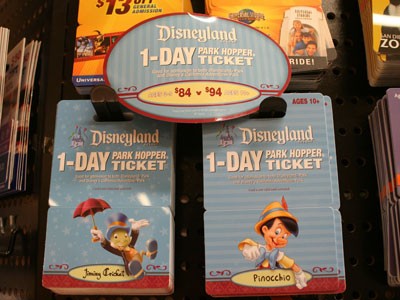OK, let’s bite.
News that Disney is raising admission prices to its Magic Kingdom – another $4 to $99 for a day pass at its Orland theme park – created a bit of a stir this week, with parents’ blogs and pundits weighing in indignantly on the increasing cost of a pass to the iconic theme parks.
Then one contrarian caught my ear, countering the morning-anchor outrage with the observation that the economy must be doing OK if Disney can hike entry fees without fear of a drop in demand. He had a point, and you might want to launch a look at your local amusement parks as economic indicators using the Disney story as a launch pad.
A blogger at TIME noted that it’s the second price hike within a year which “almost dares visitors to boycott,” as the headline says. However, the post notes that raw attendance numbers aren’t as much part of the park’s strategy these days as is the opportunity to extract maximum dollars from each visitor. How does strategy at your area’s amusement venues compare?
A recent report from market researcher IBISWorld says that after a ‘bumpy ride,” the industry is rebounding – but that smaller venues would have an increasingly difficult time competing in a saturated market with the big-name multi-park players.
Indeed, CNBC reported last fall that the “Theme park economy (is) on a great ride,” noting that a number of parks were raising prices nationwide and that investment analysts were bullish on stocks of publicly traded park companies like Cedar Fair. (Note that an exception is Sea World due to growing concerns about keeping marine mammals in captivity; if your market includes any attractions that rely on animals as entertainment, you might keep those concerns in mind. Are animal-oriented venues seeking other ways to attract visitors as humane treatment issues become widespread?)
In 2012, the UK’s Independent mused on “The rollercoast index: How ambitious new theme parks reflect economic ups and downs;” the article took a global take on what it calls the expansion of the “thrill industry,” you can apply the same concept locally.
Here’s an interesting USA Today graphic showing Disney ticket prices going back to 1981; that year a pass cost $10.75 – or $27.66 in today’s dollars, adjusted by the Bureau of Labor Statistics’ inflation calculator.

I haven’t been to Disney in the 21st century but suspect it has more to offer today than teacups and “It’s a Small World” rides; it’s up to consumers to determine if the hike in attraction is worth the more than tripling of the cost of a day in the park. Any chance you can similarly chart the ticket prices for regional amusement parks your readers frequent?
And don’t forget about jobs; in addition to seasonal hiring – which already is staring; Kings Island in Ohio is holding a jobs fair Saturday, for example – contemplate a piece on careers.
While many readers likely want to know what the temporary jobs like ride operator and entertainer pay – and how to qualify for them – permanent positions in park operations, amusement park finance, facilities management and even ride engineering and maintenance might make for some fascinating features. Some colleges even offer courses and degrees to prep grads for careers in the industry; the University of California at Long Beach offers a major in Theme Park Engineering through its school of engineering, while Ohio State University is home to a student group that focuses on the same topic. You might check any hospitality programs at area business schools for amusement park courses, as well.
The International Association of Amusement Parks and Attractions (IAAPA) offers a variety of industry resources on its website; its searchable find-an-attraction database can help you locate operators in your market. And the industry publication Amusement Today, which offers a daily e-mail digest, is a trove of inside information.











